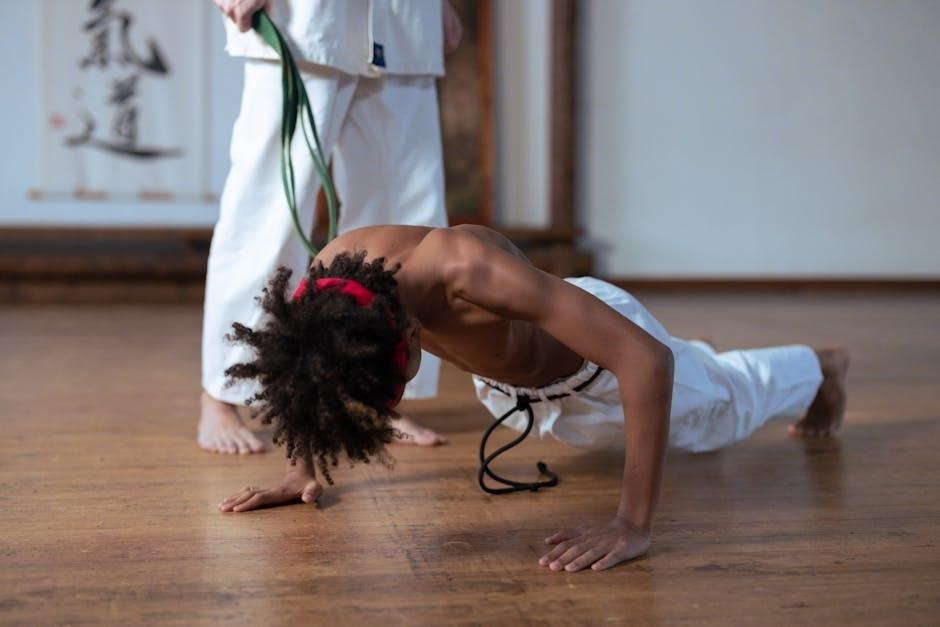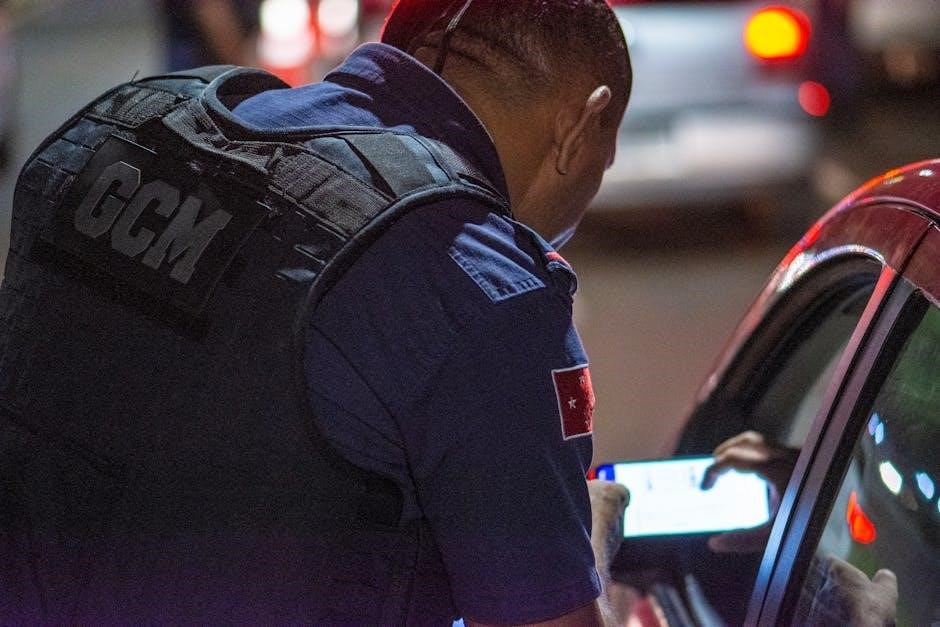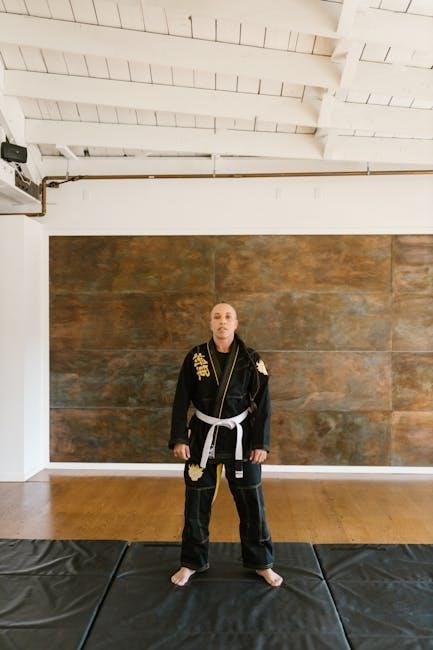
Master Guide Uniform: A Comprehensive Guide
The Master Guide uniform serves as a visible representation of leadership and commitment within the Seventh-day Adventist youth ministry․ This comprehensive guide will detail the various aspects of the uniform, including its purpose, specifications for Class A and Class B uniforms, and proper insignia placement․
The Master Guide program stands as a cornerstone of leadership development within the Seventh-day Adventist Church’s youth ministry․ It represents the most advanced level of training available for youth leaders, building upon the foundations laid by the Pathfinder and Adventurer programs․ This program equips individuals with the skills and knowledge necessary to effectively guide and mentor young people in their spiritual and personal growth․

The Master Guide program isn’t just about acquiring knowledge; it’s about embodying a spirit of service and dedication to youth ministry․ Candidates are expected to work closely with a mentor, demonstrating a commitment to excellence and a passion for sharing their faith․ The program covers various aspects of youth ministry, including leadership principles, outdoor skills, and spiritual development․
The uniform is an outward symbol of their dedication, reflecting the high standards and values upheld by the Master Guide program․ It signifies their readiness to serve as role models and mentors for the younger generation, guiding them on their journey of faith and discovery․
Purpose of the Master Guide Uniform
The Master Guide uniform serves multiple crucial purposes within the Seventh-day Adventist youth ministry․ First and foremost, it acts as a visible symbol of identification, immediately signifying the wearer’s role as a trained and dedicated leader․ This allows youth, parents, and other leaders to easily recognize and approach Master Guides for guidance and support․ The uniform fosters a sense of unity and belonging among Master Guides, reinforcing their shared commitment to service․
Beyond identification, the uniform embodies the high standards and values of the Master Guide program․ It represents the wearer’s dedication to excellence, their commitment to upholding the principles of the church, and their willingness to serve as positive role models for young people․ The uniform inspires respect and trust, encouraging youth to look up to Master Guides as mentors and guides․
It promotes pride and professionalism among Master Guides, reminding them of their responsibilities and encouraging them to conduct themselves with integrity and decorum․ In essence, the Master Guide uniform is a powerful statement of leadership, service, and commitment to the youth of the Seventh-day Adventist Church․
Class A Uniform Specifications
The Class A uniform, often referred to as the “dress uniform,” is the formal attire for Master Guides, typically worn during investitures, special events, and official church functions․ Adherence to the specified standards is crucial to maintain a professional and unified appearance․ Generally, the Class A uniform consists of a tan shirt or blouse, black pants or skirt (meeting specific length and style requirements), and appropriate footwear․
A black belt with a standard buckle is required․ Specifics for men include a black tie, while women may wear a black tie or tuxedo tie․ A Master Guide sash is also a key component, displaying earned honors and advanced level pins․ The Master Guide neckerchief and slide replace the standard Pathfinder versions․ Headgear, if worn, must adhere to official guidelines․
Insignia placement is precise, with the Master Guide pin centered above the left pocket․ Regular inspection and maintenance are essential to ensure the uniform remains clean, neat, and in accordance with the established standards, reflecting the high ideals of the Master Guide program․
General Requirements for Class A Uniform

The Class A uniform for Master Guides demands strict adherence to established guidelines to project a professional and unified image․ Key requirements encompass several aspects, starting with the core components: a tan shirt or blouse and black pants or a skirt․ The specific shade of tan and the style of the shirt or blouse are typically defined by the governing Pathfinder organization or conference․

For trousers, straight-leg, pleated-front black pants with belt loops are standard, while skirts should be A-line, pleated, and of appropriate length, generally mid-knee or below․ Footwear should be black and polished, suitable for formal occasions․ A black belt with a simple buckle is mandatory, completing the basic attire․
Beyond the clothing itself, the overall appearance matters greatly․ Uniforms must be clean, well-maintained, and properly fitted․ Attention to detail, such as neatly pressed garments and polished shoes, reflects the dedication and respect associated with the Master Guide role․ Any deviations from these general requirements should be clarified with local Pathfinder leadership to ensure compliance․
Specifics for Men’s Class A Uniform
The men’s Class A uniform builds upon the general requirements, adding distinct elements․ The standard tan shirt should be a button-down style, allowing for a tie to be worn․ A black tie, either plain or with the Master Guide logo, is typically required for formal occasions․ The tie should be properly knotted and reach the belt buckle․
Pants must be black, straight-legged, and pleated with belt loops․ They should be of appropriate length, breaking slightly over the shoes․ Black dress shoes, polished to a shine, are essential․ Socks should also be black and long enough to prevent skin from showing when seated․
A black uniform jacket may be an optional addition, although the specific style may vary depending on conference or organizational guidelines․ When worn, the jacket should be properly fitted and buttoned․ Attention to detail, such as ensuring the shirt is neatly tucked in and the tie is straight, is crucial for maintaining a professional appearance․ The Master Guide pin is displayed with pride, signifying commitment and leadership within the Pathfinder organization․
Specifics for Women’s Class A Uniform
The women’s Class A uniform shares similarities with the men’s but includes specific adaptations for a professional and modest appearance․ The standard tan blouse must be neatly buttoned, and a black tuxedo tie is required for Master Guides․ The tie should be properly secured and complement the blouse․
For the bottom, women can choose between a black A-line skirt or black straight-legged pants․ The skirt should be A-line, pleated, and reach at or below mid-knee․ Pants must be black, straight-legged, and pleated with belt loops․ Black dress shoes with a modest heel are required․ Hosiery, if worn, should be black or a neutral tone․
A black uniform jacket may also be an optional addition, with the style varying based on conference or organizational guidelines․ When worn, the jacket should be properly fitted and buttoned․ Accessories should be minimal and professional, not detracting from the uniform’s overall appearance․ Attention to detail, such as ensuring the blouse is neatly tucked in and the tie is straight, is essential for maintaining a professional appearance․
Class B (Field) Uniform Specifications
The Class B, or field uniform, offers a more relaxed and practical option for Master Guides during outdoor activities, club meetings, and events where a formal appearance is not required․ This uniform prioritizes comfort and functionality while still maintaining a presentable and recognizable image․ Typically, the Class B uniform consists of a T-shirt or polo shirt paired with pants or jeans․
The shirt is often a club-specific design, allowing individual Pathfinder clubs to showcase their identity and unity․ While designs may vary, they usually incorporate the Pathfinder logo, club name, or other relevant emblems․ The pants or jeans are generally blue, but specific guidelines may differ depending on local conference policies․
Footwear for the Class B uniform should be practical and appropriate for the activity․ Sneakers, hiking boots, or other comfortable shoes are common choices․ It’s important that the entire uniform is neat, clean, and in good repair․ While the Class B uniform allows for greater flexibility, it should still be worn with respect and pride, reflecting the values of the Master Guide program․ The Class B uniform is used during most club meetings and on camp-outs․
T-shirt and Pants/Jeans for Field Uniforms
The core components of the Class B field uniform are the T-shirt and pants or jeans, designed for comfort and practicality during various activities․ The T-shirt is a versatile item, often customized with club-specific designs, logos, or emblems to foster a sense of unity and identity within the Pathfinder group․ While specific colors and designs may vary, the T-shirt should always be neat, clean, and in good condition, representing the values of the Master Guide program․

Pants or jeans, typically blue, provide a durable and comfortable lower garment suitable for outdoor settings and active participation․ The choice between pants and jeans may depend on the specific event or activity, as well as any guidelines set by the local conference․ It’s essential that the pants or jeans are well-fitting, free from excessive wear and tear, and appropriate for the environment․
Together, the T-shirt and pants/jeans combination of the field uniform offers a practical and recognizable outfit for Master Guides, enabling them to engage in various activities with comfort and pride․ The field uniform for the Pathfinders and staff is a T-shirt and blue pants․
Club-Specific Designs for Field Uniforms
One of the distinctive features of the Class B field uniform is the opportunity for clubs to incorporate unique designs onto their T-shirts․ This customization allows each club to express its identity, values, and spirit through visual elements, fostering a sense of belonging and camaraderie among its members․ Club-specific designs can range from simple logos and emblems to elaborate artwork that represents the club’s history, mission, or achievements․
When creating club-specific designs, it’s important to consider the overall aesthetic appeal, appropriateness, and adherence to any guidelines set by the local conference or Pathfinder organization․ The design should be tasteful, respectful, and reflective of the values of the Master Guide program․ It should also be easily recognizable and distinguishable from other clubs’ designs․
Furthermore, the design should be durable and long-lasting, capable of withstanding regular wear and washing․ The use of high-quality printing techniques and materials can ensure that the design remains vibrant and intact over time, preserving the club’s identity and pride․
Each club may create its own design for field uniform T-shirts and sweatshirts․
Insignia and Placement on the Uniform
The proper placement of insignia on the Master Guide uniform is crucial for maintaining a professional and respectful appearance․ Each pin, patch, and emblem holds significance, representing achievements, affiliations, and responsibilities within the Pathfinder organization․ Adhering to the established guidelines ensures uniformity and clarity in conveying the individual’s status and accomplishments․
Specific instructions dictate the precise location for each item, considering factors such as symmetry, alignment, and proximity to other insignia․ The Master Guide pin, Pathfinder Class pocket strip, and sash insignia each have designated areas on the uniform, reflecting their relative importance and contribution to the overall presentation․
Attention to detail is paramount when affixing insignia, ensuring that they are securely attached and properly oriented․ A well-placed and maintained set of insignia enhances the credibility and authority of the Master Guide, serving as a visual testament to their dedication and commitment to youth ministry․ Understanding the rules will ensure you look neat and presentable․
Master Guide Pin Placement
The Master Guide pin holds a place of honor on the uniform, symbolizing the wearer’s completion of the Master Guide program and their commitment to leadership in youth ministry․ The prescribed placement of the Master Guide pin is centered just above the left pocket of the shirt or blouse on the Class A uniform․ This prominent position ensures that the pin is easily visible and readily identifies the individual as a certified Master Guide․
When advanced level insignia have been earned, the class pins may be placed on the sash․ It is crucial to note that only the Master Guide pin should occupy the space above the left pocket, maintaining a clean and uncluttered appearance․ Additional pins or emblems may be displayed on the sash, in accordance with the established guidelines for sash insignia placement․
The Master Guide pin should be securely fastened to the uniform, preventing it from shifting or falling off during activities․ Proper placement and maintenance of the Master Guide pin demonstrate respect for the program and the wearer’s commitment to its values․ This is a very important part of your look․
Pathfinder Class Pocket Strip Placement
The Pathfinder Class pocket strip signifies the highest Pathfinder Class in which the individual has been invested․ Its placement on the Class A uniform is carefully prescribed to maintain uniformity and clarity․
The Pathfinder Class pocket strip is positioned centered just above the left pocket of the shirt or blouse, level with the top of the pocket․ This placement ensures that the pocket strip is easily visible and readily identifies the individual’s Pathfinder achievements․
The pocket strip should be securely sewn onto the uniform, preventing it from becoming detached or misplaced․ It is important to select the correct pocket strip, representing the highest Pathfinder Class earned, and to ensure that it is properly aligned and level when attached to the uniform․
Adherence to these guidelines ensures that the Pathfinder Class pocket strip contributes to the overall neat and professional appearance of the Master Guide uniform, while also recognizing the individual’s accomplishments within the Pathfinder program․ The pocket strip is a symbol of dedication․
Sash Insignia and Advanced Level Pins
The Master Guide sash serves as a canvas for displaying earned insignia and advanced level pins, signifying accomplishments beyond the basic Master Guide requirements․ While the Master Guide pin holds a specific place on the uniform shirt, advanced level insignia find their home on the sash, showcasing further dedication and expertise․
When advanced level insignia have been earned, the class pins may be placed on the sash, allowing for a visual representation of ongoing growth and learning․ The sash offers ample space for arranging these pins in a neat and organized manner, reflecting the individual’s commitment to continued development within the Master Guide program․
The placement of advanced level pins on the sash is not rigidly defined, allowing for some personalization and creativity․ However, it is important to maintain a sense of order and balance, ensuring that the pins are evenly distributed and do not overcrowd the sash․ Some Master Guides choose to arrange their pins chronologically, while others prefer to group them by category or achievement․
The sash, adorned with its insignia and pins, becomes a testament to the Master Guide’s journey․
Uniform Maintenance and Standards
Master Guide Neckerchief and Slide
The Master Guide Neckerchief and Slide are distinctive elements of the Master Guide uniform, signifying a transition from the standard Pathfinder attire․ This unique neckerchief replaces the traditional Pathfinder neckerchief, marking the wearer’s elevated status and responsibilities within the youth ministry program․
The design and color of the Master Guide neckerchief often differ from the Pathfinder version, reflecting the maturity and leadership associated with the Master Guide role․ Similarly, the Master Guide slide, used to secure the neckerchief, may feature a unique design or emblem that distinguishes it from the Pathfinder slide․
Wearing the Master Guide Neckerchief and Slide is a privilege, earned through dedication, training, and commitment to serving young people․ It serves as a visible reminder of the Master Guide’s role as a mentor, guide, and role model․
The neckerchief should be worn neatly and properly, with the slide positioned at the appropriate height․ Maintaining the cleanliness and appearance of the neckerchief and slide reflects the Master Guide’s attention to detail and commitment to upholding the standards of the program․ The Master Guide Neckerchief and Slide is a symbol of leadership․